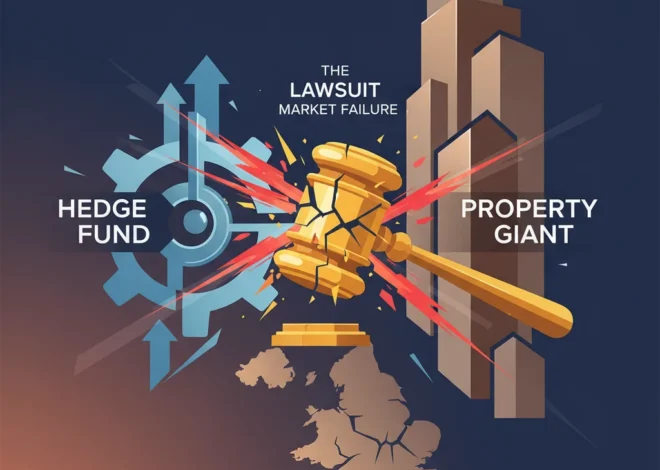
UK’s Economic Engine Sputters: Why a Car Production Slump is a Red Flag for the Entire Economy
The latest economic data from the UK paints a picture of an economy walking a tightrope. With a growth rate of just 0.1%, the nation’s economic pulse is faint, raising critical questions for investors, business leaders, and policymakers. While any growth is technically positive, this razor-thin margin reveals a worrying fragility, primarily caused by a significant downturn in the manufacturing sector. At the heart of this industrial malaise is a steep decline in car production, an industry that has long been a bellwether for the UK’s economic health.
This slowdown isn’t just a statistic on a spreadsheet; it’s a signal. It points to deeper structural challenges, the complex interplay between different sectors, and the urgent need for strategic adaptation in a rapidly changing global landscape. As we unpack these figures, we’ll explore what’s really happening under the hood of the UK economy, from the factory floor to the trading floor, and what it means for your investment portfolio and business strategy.
Dissecting the Data: A Tale of Two Economies
To truly understand the UK’s current economic position, we must look beyond the headline GDP figure. The Office for National Statistics (ONS) data reveals a stark divergence in performance between the country’s primary economic pillars: the services sector and the manufacturing industry. While one continues to provide a crucial buffer, the other is acting as a significant drag on overall growth.
The table below breaks down the recent performance, illustrating the contrasting fortunes of key sectors that contribute to the UK’s Gross Domestic Product (GDP).
| Economic Sector | Recent Performance Trend | Key Contributing Factors |
|---|---|---|
| Overall GDP | Minimal Growth (0.1%) | Services sector growth offset by manufacturing decline. |
| Manufacturing | Significant Contraction | Sharp fall in car production, supply chain issues, high energy costs. |
| Services | Moderate Growth | Strong performance in finance, professional services, and information technology. |
| Construction | Mixed/Flat Performance | Impacted by higher borrowing costs and uncertain project pipelines. |
This schism highlights a long-standing theme in modern economics: the UK’s heavy reliance on its services-based economy. While the strength in finance, banking, and professional services provides resilience, the erosion of the industrial base poses a long-term risk to economic balance and stability. Grounded: How a Government Shutdown Clips the Wings of the US Economy and Your Portfolio
The Manufacturing Conundrum: Why the Wheels Are Coming Off Car Production
The “big fall in car production” mentioned in the official figures is the primary catalyst for the manufacturing sector’s poor performance. This isn’t a simple blip; it’s the result of a confluence of powerful headwinds that have been gathering for years.
- The Electric Vehicle (EV) Transition: The global automotive industry is undergoing a once-in-a-century transformation. Retooling factories for EV production is a capital-intensive, time-consuming process. Any temporary shutdowns or slowdowns during this transition phase directly impact output figures.
- Supply Chain Volatility: The ghosts of the pandemic and the new realities of post-Brexit trade continue to haunt supply chains. Delays in sourcing critical components, from semiconductors to battery cells, can bring production lines to a grinding halt.
- Global Demand and Competition: A sluggish global economy tempers demand for new vehicles, particularly in key export markets. Furthermore, the UK faces intense competition from manufacturing powerhouses in Europe and Asia, making it harder to maintain market share.
- High Operating Costs: Elevated energy prices and labor costs in the UK squeeze profit margins for manufacturers, making investment in new capacity and technology a more challenging proposition.
This situation puts the UK’s industrial strategy under the microscope. For the nation’s economy to thrive, it cannot afford to let its manufacturing capabilities wither. A robust industrial sector is vital for a balanced trade portfolio, high-skilled employment, and national resilience.
The Investor’s Playbook: Navigating a Stagnant Economy
For those involved in investing and trading, macroeconomic indicators like these are crucial inputs for decision-making. A stagnant economy doesn’t mean a lack of opportunity, but it does demand a more nuanced and strategic approach.
Impact on the Stock Market
The immediate impact on the stock market is likely to be sector-specific. We can expect to see:
- Pressure on Industrials and Automakers: Companies directly involved in car manufacturing and their supply chains may see their stock prices come under pressure as analysts revise earnings forecasts downwards.
- Resilience in Financials and Tech: Banks, insurance companies, and fintech firms may continue to perform well, buoyed by the strong services data. The ongoing innovation in financial technology continues to attract significant investment.
- A Flight to Quality: In times of uncertainty, investors often gravitate towards “defensive” stocks—companies in sectors like utilities, consumer staples, and healthcare that provide essential goods and services and tend to have more stable earnings regardless of the broader economic cycle.
Grounded: How a Potential Government Shutdown Threatens to Clip the Wings of the U.S. Economy
Currency and Monetary Policy Implications
This weak growth data puts the Bank of England in a difficult position. The central bank’s primary mandate is to control inflation, but it must also avoid tipping the economy into a recession. A reading of just 0.1% growth may lead markets to believe that future interest rate hikes are less likely, or that cuts may even be on the horizon sooner than anticipated. This sentiment can put downward pressure on the British Pound (GBP). For forex traders, this creates potential volatility and trading opportunities.
The Broader Outlook: Can Technology Be the New Engine?
Looking ahead, the path to more robust economic growth requires a multi-faceted strategy. While shoring up traditional manufacturing is essential, fostering the growth sectors of the future is paramount. The UK has a world-leading position in fintech, an industry that is revolutionizing everything from banking and payments to investing and insurance. This fusion of finance and technology is a high-value, high-growth area that can create the jobs of the future.
Furthermore, innovative technologies could offer solutions to the very problems plaguing the manufacturing sector. For instance, the use of blockchain technology could be explored to create more transparent and resilient supply chains, reducing the risk of the component shortages that have hampered car production. Investing in green technology and advanced manufacturing can also create a new competitive edge for the UK on the global stage.
The current economic slowdown, driven by the slump in car manufacturing, is a clear and present challenge. It tests the resilience of the UK economy and forces a hard look at its underlying structure. For investors and business leaders, it’s a time for caution, but also for strategic positioning. The sectors and companies that can innovate, adapt, and align with the technological and green transitions will be the ones that thrive, even when the broader economic engine is idling. The road ahead may be uncertain, but for the prepared investor, it is far from empty of opportunity. Gulliver's Curse: The Perils of Immortality in Modern Finance and Investing
Conclusion: A Crossroads for the UK Economy
The UK’s 0.1% growth is more than just a number—it’s a narrative of an economy at a crossroads. It tells a story of divergence, where the dynamism of the services sector is single-handedly keeping the country out of contraction while its industrial heartland struggles. The sharp decline in car production is the most acute symptom of this wider manufacturing malaise. The key takeaway for anyone involved in finance, from seasoned investors to business strategists, is the importance of looking beneath the surface. Understanding these sectoral shifts is critical to navigating the complexities of the modern stock market and making informed decisions. The challenge now is for the UK to not only support its service-based strengths but to reignite its industrial engine for a more balanced and resilient economic future.


